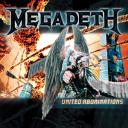
I’m a Neutral Good Halfling Druid/Bard…
March 14, 2008At least I am according to this ‘What D&D character are you?’ test I read about on Psychochild’s blog. Here are my stats:
Ability Scores:
Strength- 13
Dexterity- 17
Constitution- 13
Intelligence- 15
Wisdom- 18
Charisma- 12
Alignment:
Neutral Good- A neutral good character does the best that a good person can do. He is devoted to helping others. He works with kings and magistrates but does not feel beholden to them. Neutral good is the best alignment you can be because it means doing what is good without bias for or against order. However, neutral good can be a dangerous alignment because because it advances mediocrity by limiting the actions of the truly capable.
Race:
Halflings are clever, capable and resourceful survivors. They are notoriously curious and show a daring that many larger people can’t match. They can be lured by wealth but tend to spend rather than hoard. They prefer practical clothing and would rather wear a comfortable shirt than jewelry. Halflings stand about 3 feet tall and commonly live to see 150.
Primary Class:
Druids- Druids gain power not by ruling nature but by being at one with it. They hate the unnatural, including aberrations or undead, and destroy them where possible. Druids receive divine spells from nature, not the gods, and can gain an array of powers as they gain experience, including the ability to take the shapes of animals. The weapons and armor of a druid are restricted by their traditional oaths, not simply training. A druid’s Wisdom score should be high, as this determines the maximum spell level that they can cast.
Secondary Class:
Bards- Bards often serve as negotiators, messengers, scouts, and spies. They love to accompany heroes (and villains) to witness heroic (or villainous) deeds firsthand, since a bard who can tell a story from personal experience earns renown among his fellows. A bard casts arcane spells without any advance preparation, much like a sorcerer. Bards also share some specialized skills with rogues, and their knowledge of item lore is nearly unmatched. A high Charisma score allows a bard to cast high-level spells.
I’m not sure how I became a Halfling given that when it asked me my height I ticked ‘tall’ but apart from that I’m fairly happy with being a hybrid class Druid/Bard although my Bard spellcasting abilities will suck, because I have very average Charisma. But not to worry as I’m a long way from casting any decent spells being a mere level 2/2. One thing it doesn’t tell me is how many Hit Points I have, assuming this is AD&D (did they eve have Druids and Bards in basic D&D?) I guess I’d get 1D8 + 1D6/2, right, meaning an average of about 4 hitpoints per level, so roughly 8? Probably enough to take out a Kobold, maybe two if I used my healing spells. Can a Druid’s animal companion attack at this level, anybody(My D&D books are in my mum’s garage)?


They’re using the newer 3(.5) edition of D&D. This means that each level is a full level, no more “half” hit points for multi-class. So, if you were 1/2 Druid/Bard, you would have 1d8+2d6 hit points, plus con bonus for each level. It’s also the rule that you get max hit points for 1st level. Finally, in 3rd edition, 13 Con gives a +1 modifier, so you would get an extra +3 hit points on top of the rolls.
However, you advance as your total level: so if you were a 1/2 Druid/Bard, then you need just as much experience to gain one more level of a class as someone else does to go from level 3 to level 4 in a single class. It works out a lot nicer that way, really, plus Humans can finally get in on the multi-class action, and they have abilities that make them a serious consideration for people that aren’t trying to power-game the whole “dual class” BS from 2nd edition.
Why, yes, I am in an active D&D campaign. Why do you ask? 🙂